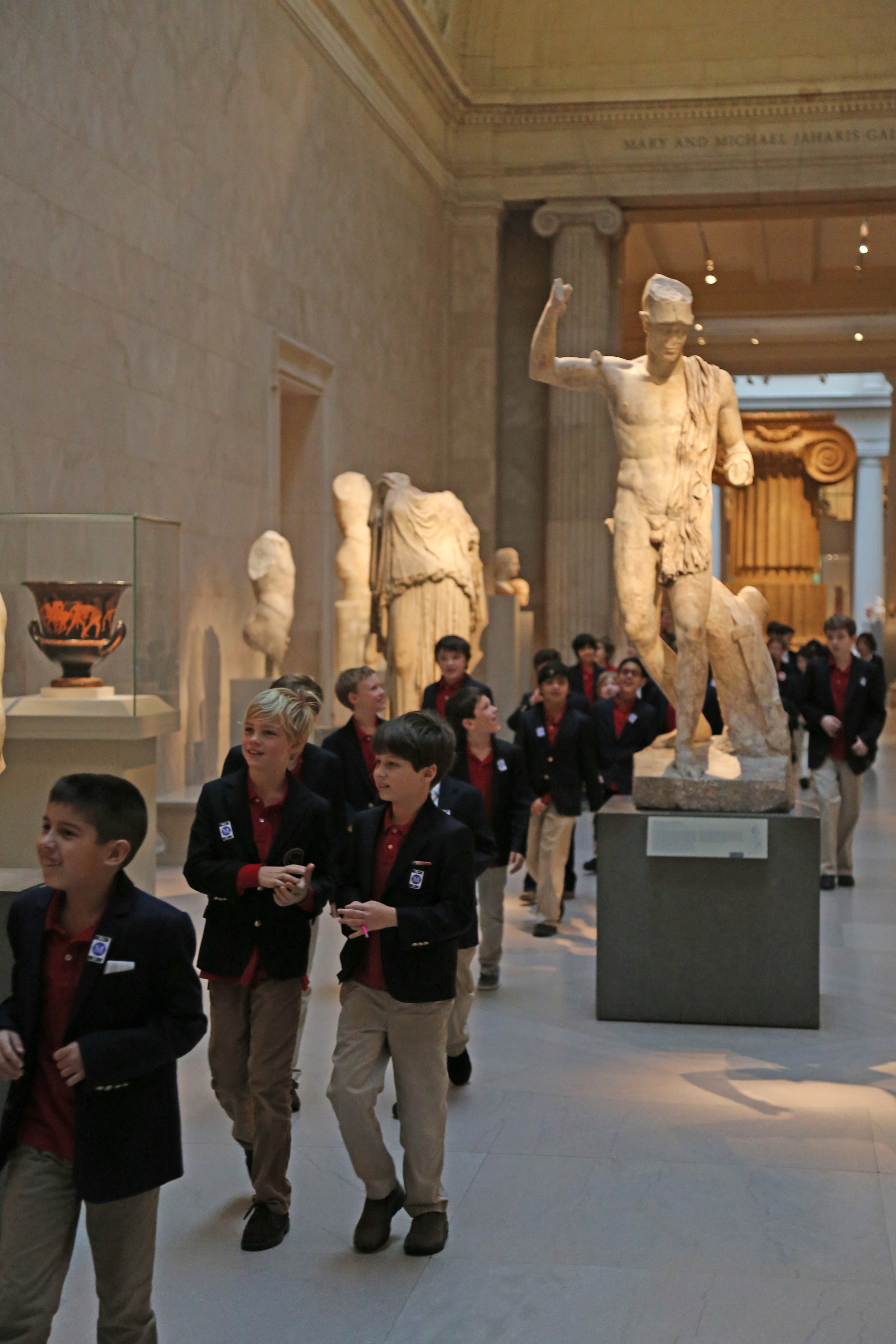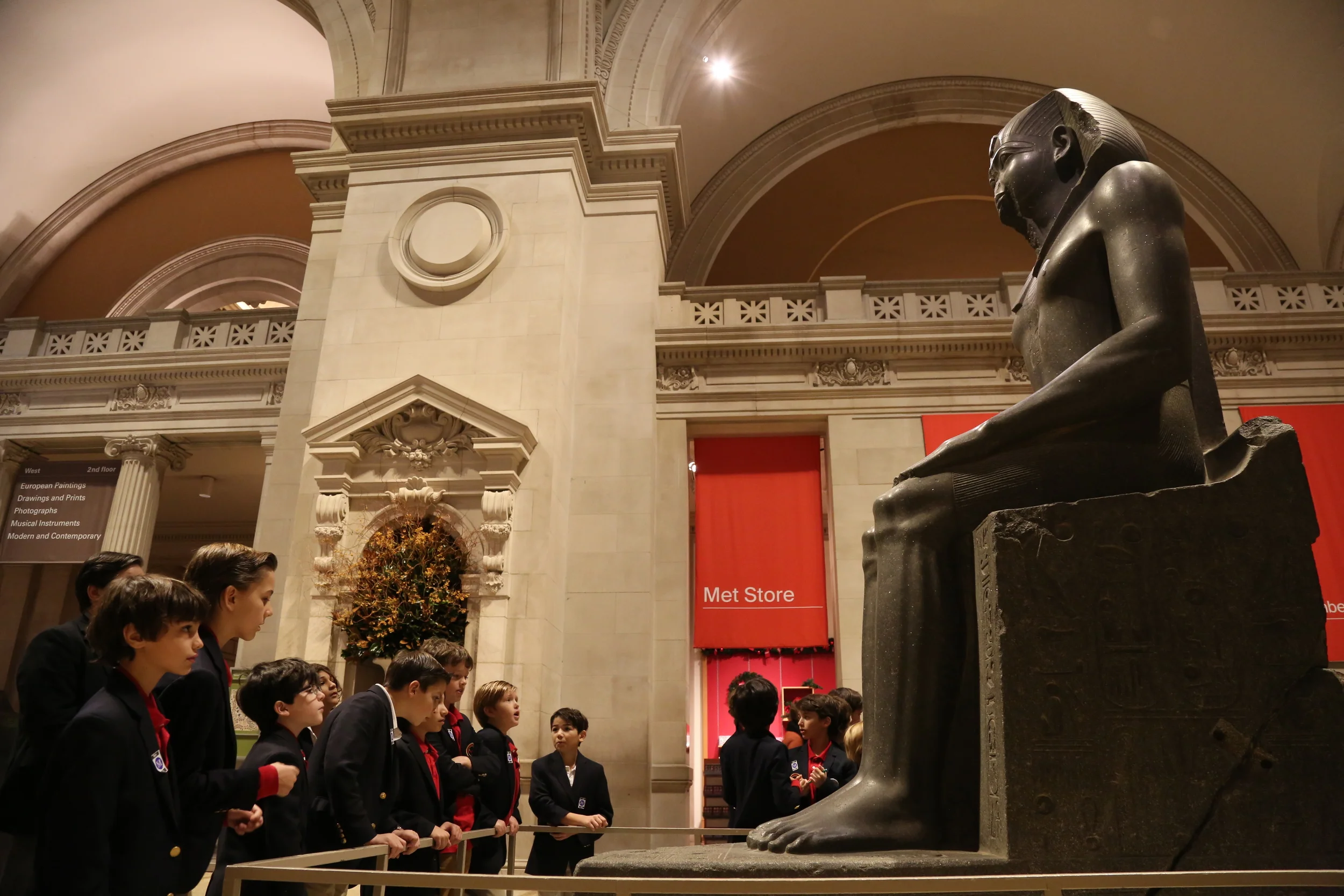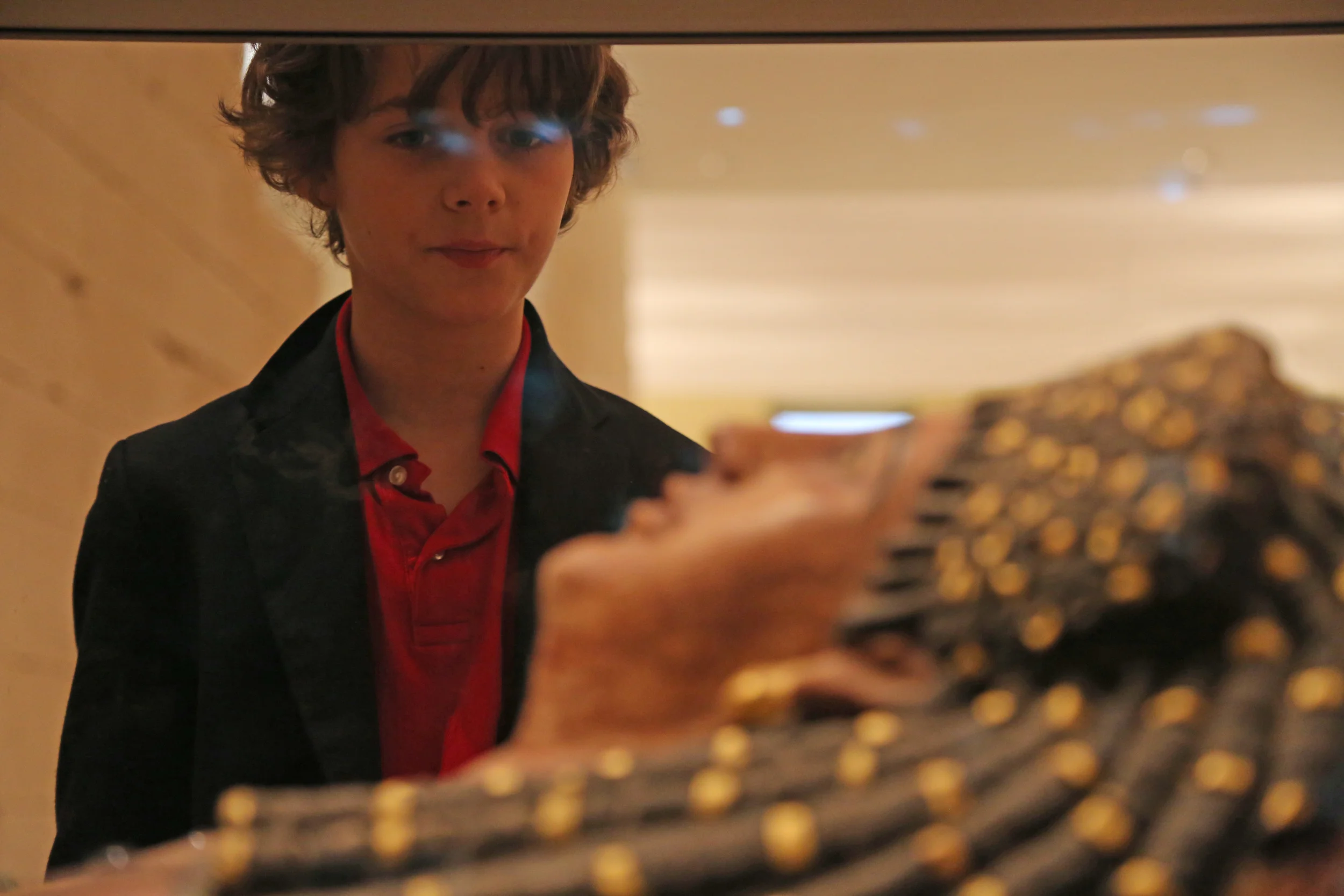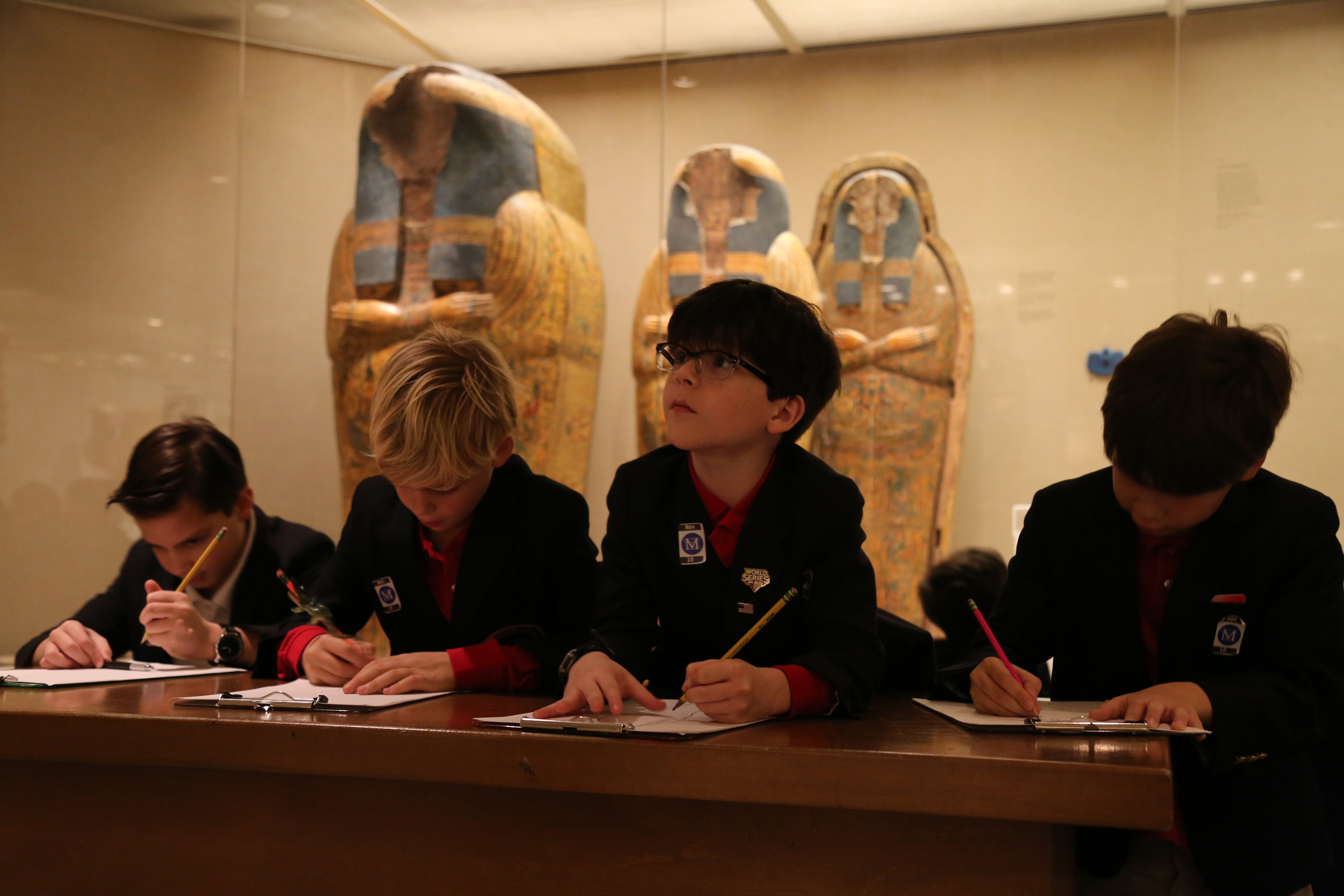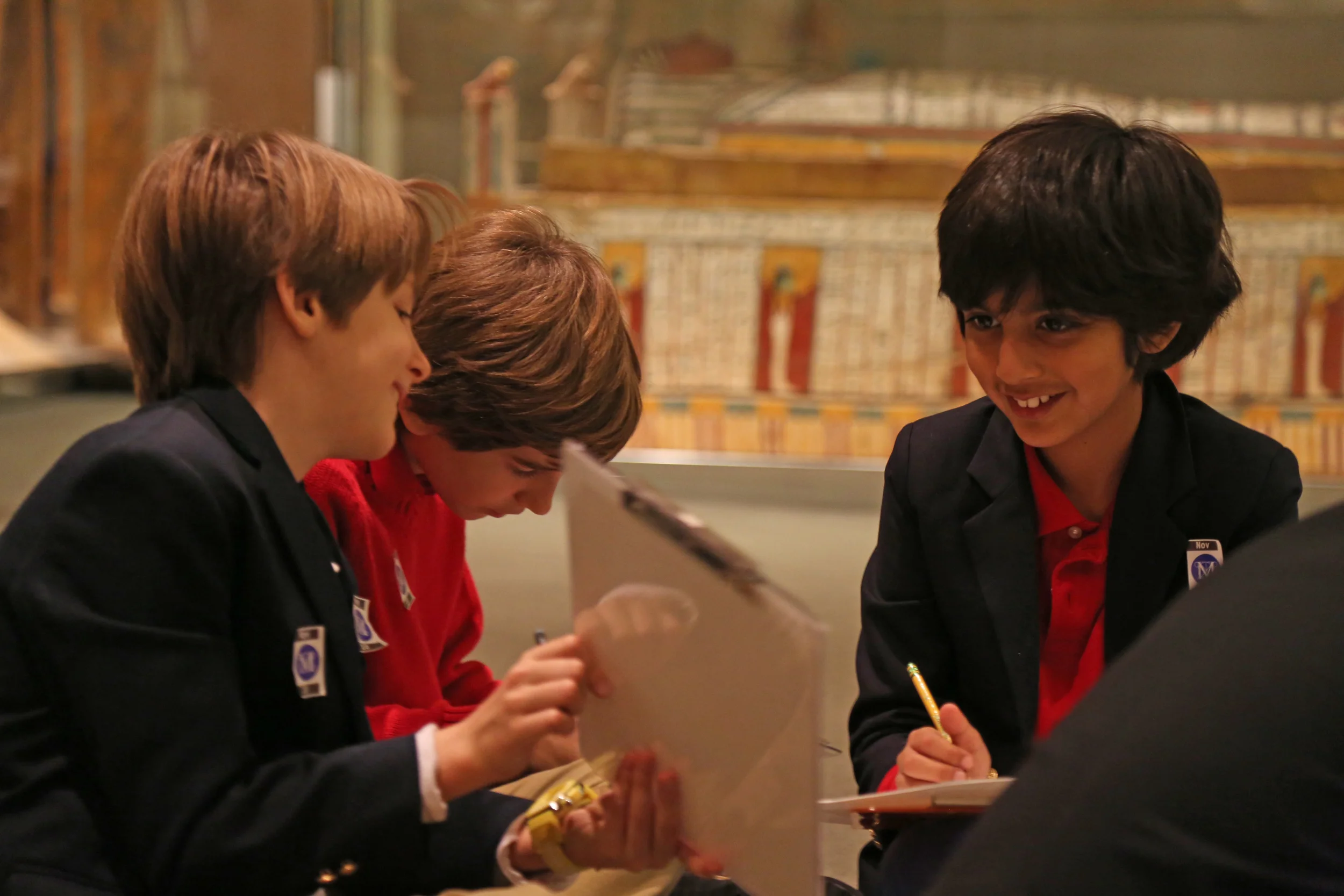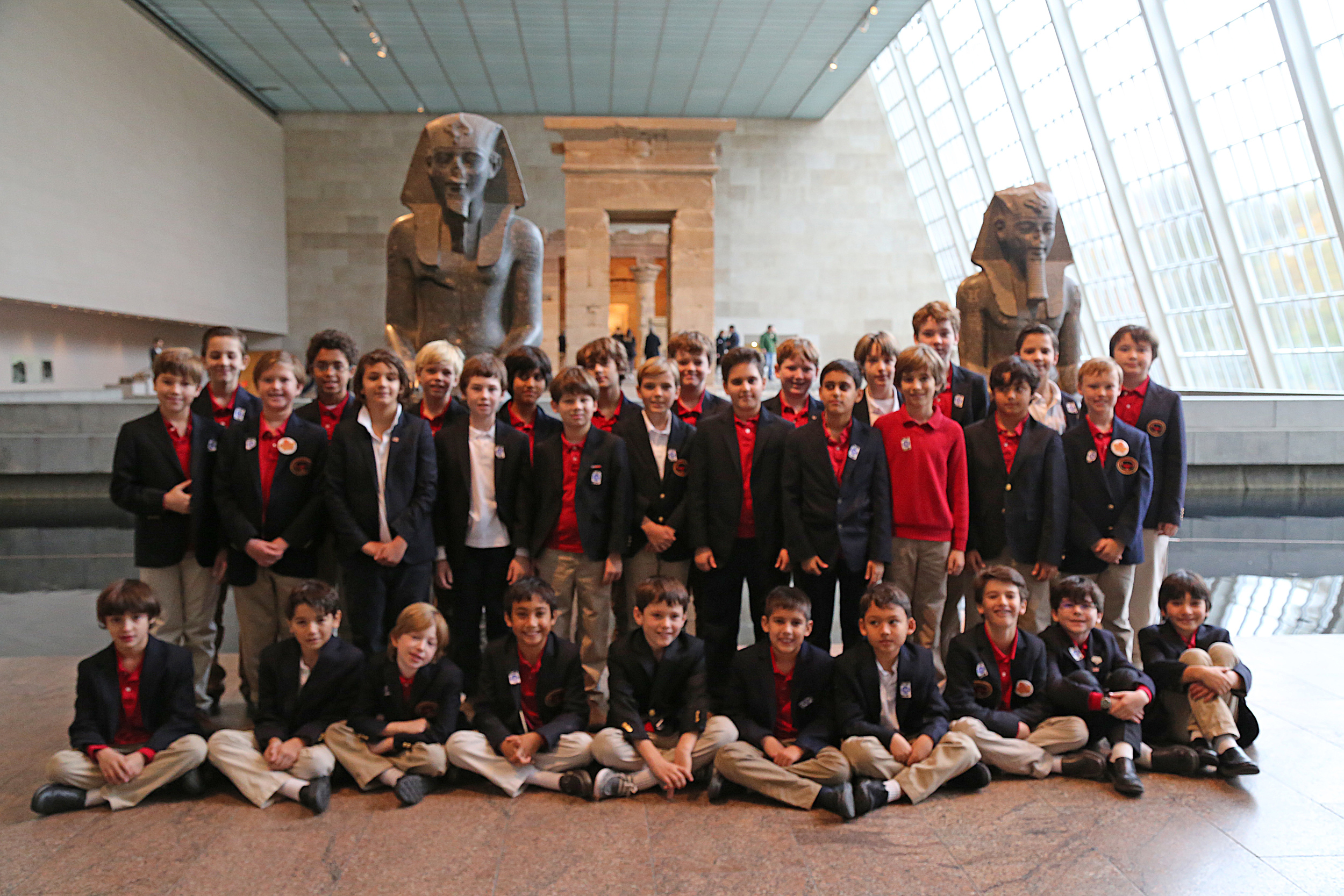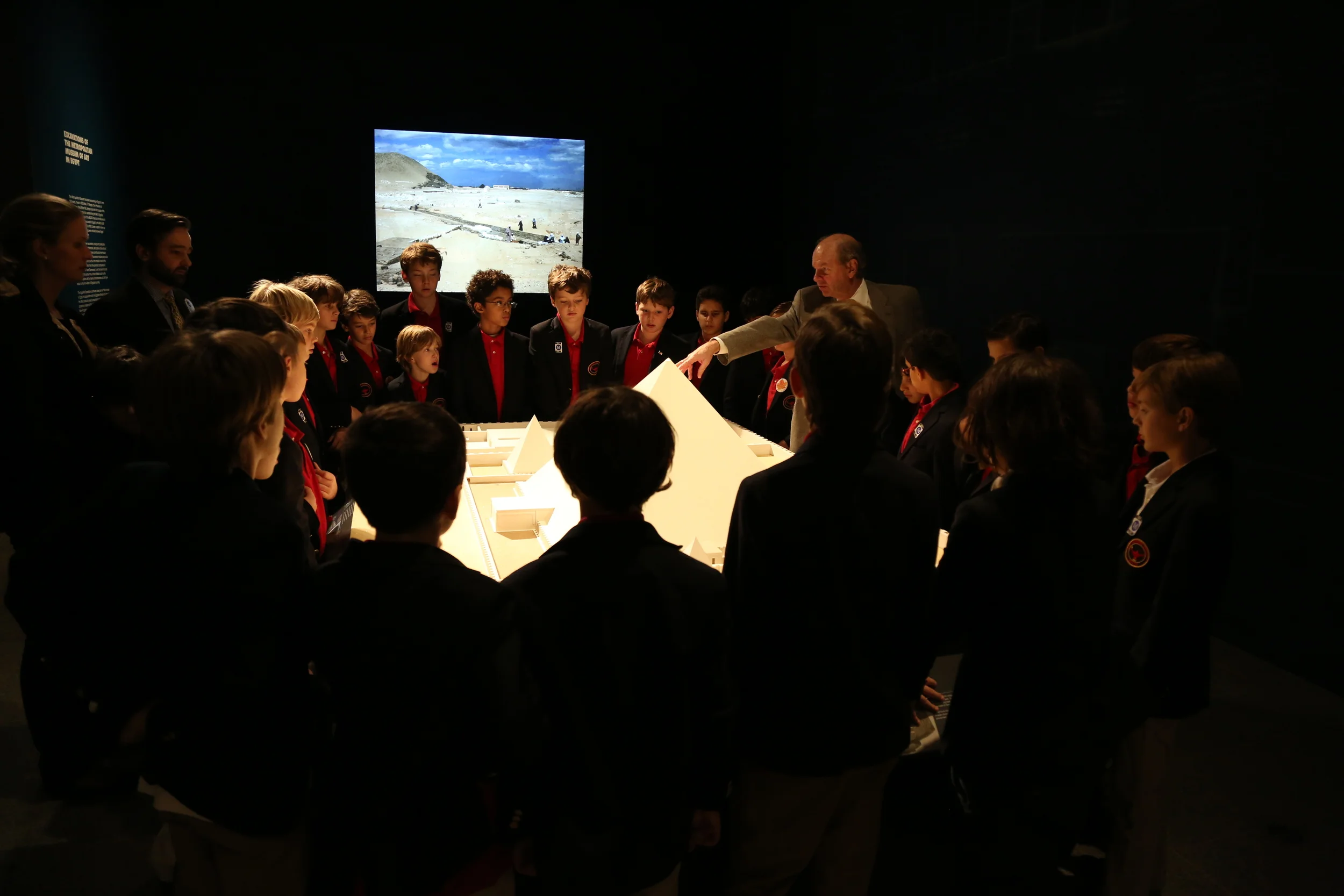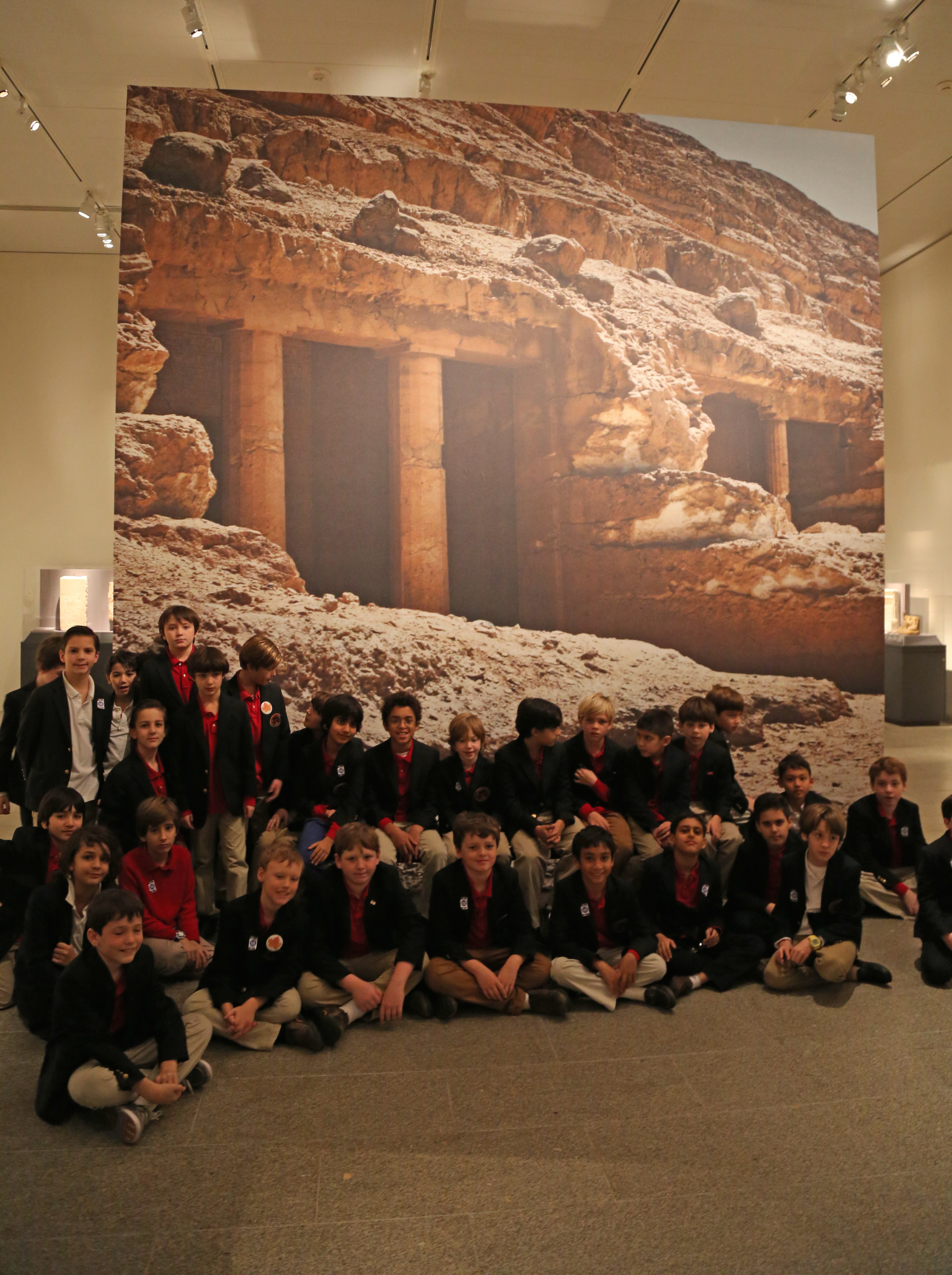Fourth Grade Boys Gain New Knowledge of Ancient Egypt
The fourth grade boys recently spent the morning at the Metropolitan Museum of Art in conjunction with their study of Ancient Egypt. As they explored the Egyptian wing of the museum, they were able to point out many gods, pharaohs and artifacts they recognized from their readings. The Museum's collection of ancient Egyptian art, according to its website, consists of approximately 26,000 objects of artistic, historical and cultural importance, dating from the Paleolithic to the Roman period (ca. 300,000 B.C.–A.D. 4th century). Director of Communications Design Jeremy Katz '04, who accompanied the fourth grade class, offers the following report:
To start their tour, the boys looked up in awe at “Colossal Statue of a Pharaoh,” the 10-foot-tall, nearly nine-ton, 4,000-year-old single block of stone in the museum lobby. This monumental ancient Egyptian statue of a seated pharaoh (probably Amenemhat II based on the style), is on loan to the Met for 10 years, starting in 2011, by the Ägyptisches Museum und Papyrussammlung, Staatliche Museen in Berlin.
The boys moved on to the Tomb of Perneb (ca. 2350 B.C.), an open-air courtyard reinstalled in the Museum in the 1900s from Saqqara, Egypt. Fourth grade teacher Bill Cantwell, who teaches the oldest Lower Schoolers about Ancient Egypt in their history class each year, explained the Old Kingdom tomb, "Perneb's mastaba has a main chapel where the wall decorations and hieroglyphs focus on offerings which would provide sustenance for Perneb in the afterlife. The boys all commented on the false door by which the ka, the spirit double, would receive the offerings."
From there, the boys toured the kingdoms of Egypt, stopping to admire statues devoted to Hatshepsut, the best known of several female Egyptian rulers. Afterwards they posed for a group photo in The Temple of Dendur, built by Petronius, the Roman governor of Egypt, around 15 BC and dedicated to Isis, Osiris, as well as two deified sons of a local Nubian chieftain.
When the boys visited a room filled with sarcophagi of Egyptian pharaohs, Art Department Chair Nik Vlahos handed out pencil and paper and spoke about drawing the tombs of the royal mummies from observation, advising the boys to focus on the major parts first and the details later.
While Mr. Cantwell has been taking fourth grade boys to the Ancient Egypt wing of the museum for years, this year’s trip was unique. This class had the opportunity to visit a special temporary exhibit at the Met, “Ancient Egypt Transformed: The Middle Kingdom.” The comprehensive show features nearly 300 works from 33 international museums as described by Casey Quackenbush in the Observer, many of which make their debut on American soil to fill in the blank spots of public knowledge on a period typically overlooked in favor of the more public and endlessly fascinating “celebrity” period of King Tut during the New Kingdom.
Mr. Cantwell showed the boys artworks composed in the 11th, 12th and 13th dynasties, dominated by pharaohs named Mentuhotep, Amenemhat and Senwosret. One of the highlights was a model of the pyramid complex of Senworsret III located in Dahshur, Egypt, 15 miles south of Cairo. He explained, “One of the concerns of the 12th dynasty kings was restoring the glory of the Old Kingdom; that is why this pyramid complex resembles those at Giza.”
The boys returned to School with fresh insight on Ancient Egypt and will continue using the sarcophagus as inspiration for art projects. Mr. Vlahos said, "Students will draw a sarcophagus and add color, all the while keeping in mind that it is part ancient Egypt, part 2015 sarcophagus. They can include contemporary objects that they would choose to take over into the afterlife. The boys will then go on to use clay to build a free-standing sarcophagus that will be glazed and fired to a shiny finish."
